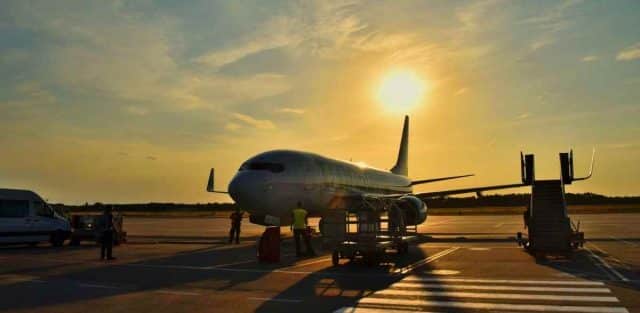Density Altitude

When summer rolls around and the weather gets warmer, many travelers head to high-altitude destinations to cool down, escape the streets of their concrete jungle and spend some time enjoying nature. You may think it’s as simple as hopping in a jet and heading for the hills, but that’s not necessarily the case. Warm temperatures, high altitude and humidity all contribute to density altitude.
What is density altitude?
In simple terms, density altitude occurs when hot, humid temperatures mix with high altitude causing the air density to decrease. This combination causes aircraft to underperform, leading to longer-than-normal takeoff and landing distances.
What does that mean for me?
When the opportunity for density altitude to develop is present, travelers can experience:
- Delays
- Rescheduled flights
- Unexpected stops
It’s important to note that some routes, especially during the summer season, are more prone to density altitude, especially when certain aircraft are being chartered. Those destinations and aircraft include:
- Telluride to Chicago on a Lear 60
- Scottsdale to Teterboro on a Citation X
- Teterboro to Los Angeles on a G200
How can I avoid unexpected delays due to density altitude?
If you’re worried about a high-density altitude event interrupting your travel plans, you should:
- Plan to arrive at your destination early in the morning or later in the evening
- Pack as light as you can to help reduce the gross weight of the charter aircraft
- Pad your itinerary with extra time in case you have to make an unexpected fuel stop
When summer rolls around and the weather gets warmer, many travelers head to high-altitude destinations to cool down, escape the streets of their concrete jungle and spend some time enjoying nature. You may think it’s as simple as hopping in a jet and heading for the hills, but that’s not necessarily the case. Warm temperatures, high altitude and humidity all contribute to density altitude.
What is density altitude?
In simple terms, density altitude occurs when hot, humid temperatures mix with high altitude causing the air density to decrease. This combination causes aircraft to underperform, leading to longer-than-normal takeoff and landing distances.
What does that mean for me?
When the opportunity for density altitude to develop is present, travelers can experience:
- Delays
- Rescheduled flights
- Unexpected stops
It’s important to note that some routes, especially during the summer season, are more prone to density altitude, especially when certain aircraft are being chartered. Those destinations and aircraft include:
- Telluride to Chicago on a Lear 60
- Scottsdale to Teterboro on a Citation X
- Teterboro to Los Angeles on a G200
How can I avoid unexpected delays due to density altitude?
If you’re worried about a high-density altitude event interrupting your travel plans, you should:
- Plan to arrive at your destination early in the morning or later in the evening
- Pack as light as you can to help reduce the gross weight of the charter aircraft
- Pad your itinerary with extra time in case you have to make an unexpected fuel stop








